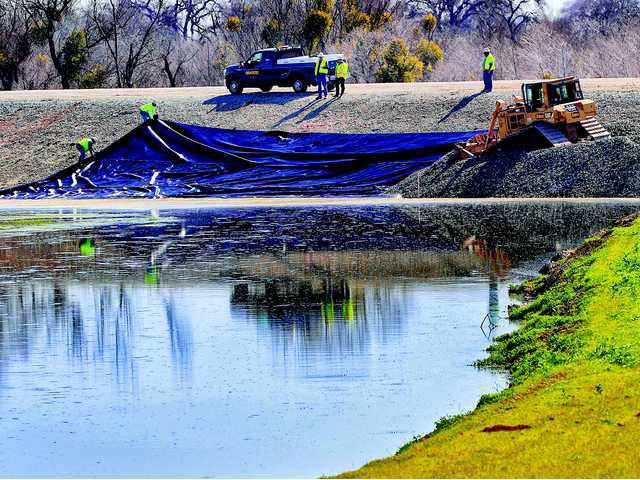Could a surge of partially treated wastewater – essentially raw sewage – be soon coming down the San Joaquin River?
With the Tuolumne River surging to levels not seen in more than a decade, the City of Modesto recently announced that the high water has overwhelmed its sewer system by eliminating some of their capacity to store wastewater, and will likely result in having to release an amount that will ultimately end up in the San Joaquin River and flow out into the Delta.
While the release likely wouldn’t happen for another few weeks, the discharge would ultimately flow through South Manteca and Lathrop before dispersing out into the channels that lead to the San Francisco Bay – something that Lathrop city officials were keeping an eye on Friday when the announcement was made.
Modesto city workers spotted the problem on Thursday when they noticed water from the Tuolumne entering the city’s sewage system just off of the riverbank – mobilizing to employ a temporary barrier that would bring the influx of water to a halt. A permanent fix can’t be achieved until after the swollen river recedes – an expected byproduct of an increase in the Don Pedro outflow that was announced last week when dam operators opened the spillway for the first time since 1997.
What that means for the areas that are being protected by the water-logged levees remains to be seen.
According to Lathrop City Manager Steve Salvatore, seepage – where water begins to pool in adjacent low-lying areas as the surface water table compensates for the high river mark – is now visible along some of the levees that protect the city, and Reclamation District 17 is putting up some barriers to limit the water that is rising in the area.
But while boils, sinkholes and trouble spots have been found almost daily in South Manteca, Salvatore said that the condition of the levees in Lathrop look good at this point. He’s confident that despite the high water they’ll hold the swollen San Joaquin River.
“We have crews from the reclamation district that are monitoring and patrolling those levees 24/7, and they’re in pretty good shape right now with the amount of water that they’re holding back,” Salvatore said. “We’re keeping a close on everything, but right now things are looking good.”
Lathrop, unlike Manteca, has new neighborhoods built in some instances right up to the levees along the San Joaquin River. But unlike the agricultural levees built in South Manteca decades ago by the Army Corps of Engineers, the levees of Reclamation District 17 are constructed to provide urban flood protection, and concentrated efforts to reinforce them as development has intensified in the area has resulted in more maintenance than the rural levees that are maintained predominantly by a collective of farmers in conjunction with the state.
On Friday, the San Joaquin River at Vernalis dropped down below 31 feet – a welcome sign for flood workers who have steadily watched the river rise over the course of the last week to levels that haven’t been seen in more than decade.
Except for a breach on Monday night that was patched by farmers and has since been reinforced by construction crews contracted by the State of California, no major flooding has been reported.
To contact reporter Jason Campbell email jcmapbell@mantecabulletin.com or call 209.249.3544.
RAW SEWAGE IN RIVER?
Modesto warns it could happen soon



